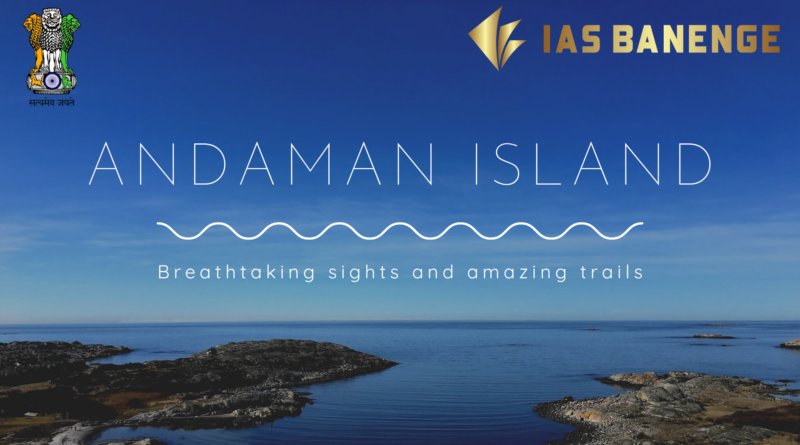North of the Andaman Islands, What’s Brewing? Ias Banenge
Context
Given the growing military activity in the Coco Islands and their proximity to the Andaman and Nicobar Islands, India decided to expand its capabilities.
Relevance:
GS Paper-3: Bilateral, regional and global groupings and agreements involving India and/or affecting India’s interests, India and its neighbourhood- relations.
READ MORE – Jupiter’s Moon Will Be Orbited First-Ias Banenge
Mains Question
In order to protect its security and strategic interests, how can India effectively counter China’s growing maritime ambitions in Myanmar and the alleged developments in the Coco Islands? (150 words).
Key Points:
- By making significant investments in ports and infrastructure throughout the Indian Ocean Region (IOR), China has recently increased its maritime reach.
- Myanmar is a key target for China’s maritime ambitions due to its strategic location and unstable political situation. This has been a source of worry for India, especially in light of recent reports of Chinese activity in the Coco Islands, which are close to India’s Andaman and Nicobar Islands (ANI).
Why does China value Myanmar?
- In order to secure its maritime supply lines for energy imports and lessen its dependence on the constrained Strait of Malacca, China has long sought to diversify its access to maritime routes.
- Due to Myanmar’s strategic location on the Bay of Bengal, China can advance its maritime objectives there. Additionally, China is Myanmar’s top supplier of defence products, a significant trading partner, and the second-largest foreign investor in the nation.
- A significant part of China’s Belt and Road Initiative (BRI) is the China-Myanmar Economic Corridor (CMEC), a collection of infrastructure projects along the Chinese-Myanmar border.
- These projects are situated in unstable regions, emphasising the need for stability. China now has a sizable stake in Myanmar, giving it the opportunity to use its influence and financial investments for its own gain.
Alleged Chinese presence in the Coco Islands
- According to recent reports, China is allegedly building signals intelligence (SIGINT) stations in the Coco Islands, which are north of the ANI in the eastern Bay of Bengal.
- The islands provide Beijing with a vantage point for monitoring, surveilling, and gathering intelligence on maritime movements, particularly India’s naval activities in the IOR, and have the potential to be used as a launchpad for naval deployments, which is why this new information has drawn attention and sparked renewed concern.
Identifying truth from fiction
- However, given China’s extensive construction activities in the South China Sea and its flurry of activity in and across the IOR, it is reasonable to assume that China has substantive intelligence capabilities.
- Myanmar has consistently denied any Chinese military involvement and even invited Indian defence officials to visit Great Coco, confirming the presence of an airstrip but no visible Chinese military presence.
- Given its unstable internal situation and the lack of any compelling reasons for it to be using the Coco Islands strategically, Myanmar may be acting on its own initiative, but India must continue to advance with building up its own capabilities within the ANI.
Do you know?
- During the Prime Minister’s visit to the island in 2018, Ross Islands was renamed as Netaji Subhash Chandra Bose Dweep in recognition of Netaji Subhas Chandra Bose’s historical significance and to honour his memory.
- Shaheed Dweep and Swaraj Dweep were also given to Neil Island and Havelock Island, respectively.The Prime Minister has always placed the highest priority on paying respect to the nation’s real-life heroes. In keeping with this spirit, it has now been determined to give the 21 largest unnamed islands in the island group their names after the 21 recipients of the Param Vir Chakra.
- This will be a permanent tribute to our heroes, some of whom paid the ultimate price to safeguard the integrity and sovereignty of the country, as the largest unnamed island will be named after the first Param Vir Chakra awardee, the second largest unnamed island will be named after the second Param Vir Chakra awardee, and so on.
Security Implications for India
- India has increased its own capabilities as a result of the expanding military activities in the Coco Islands and those islands’ proximity to the ANI.
- In anticipation of air defence and air surveillance following the infrastructural developments taking place in the Coco Islands, India has pushed for upgrading the deterrence capabilities of the tri-service AN Command.
- India’s concerns over China’s activities in Myanmar and the IOR are not new. India has been closely monitoring China’s BRI and its potential effects on regional security.
- To counter China’s expanding influence, India has also been forging its own strategic alliances with nations in the region, including Japan, Australia, and the US.
Conclusion:
India must continue to advance with expanding its own capabilities in the ANI and forming strategic alliances with like-minded nations to counter China’s growing influence. China’s expanding maritime ambitions in Myanmar and the alleged developments in the Coco Islands have significant implications for India’s security.
FAQs – Andaman Islands
1.What is located north of the Andaman Islands?
North of the Andaman Islands is a region of the Bay of Bengal, which includes the Nicobar Islands, as well as the Myanmar coastline. This region is a popular destination for adventure seekers and nature enthusiasts.
2.Are there any other islands or landmasses located in that area?
Yes, the Nicobar Islands are a group of islands located to the east of the Andaman Islands, and they are part of the union territory of Andaman and Nicobar Islands. The northern part of the Nicobar Islands is located in the region north of the Andaman Islands.
3.What is the weather like in the region north of the Andaman Islands?
The region north of the Andaman Islands has a tropical climate, with hot and humid temperatures year-round. The monsoon season occurs between May and October, which brings heavy rainfall and occasional storms.
4.Are there any notable natural features in the area?
Yes, the region north of the Andaman Islands is known for its beautiful natural features, including pristine beaches, coral reefs, and tropical rainforests. The Nicobar Islands are home to some of the most diverse and untouched coral reefs in the world.
5.Is the region known for any particular wildlife or marine species?
Yes, the region north of the Andaman Islands is home to a diverse range of wildlife and marine species. The Nicobar Islands are home to many endemic species, including the Nicobar pigeon, Nicobar tree shrew, and Nicobar megapode. The waters around the islands are also home to a variety of marine species, including dugongs, sea turtles, and dolphins.
6.Are there any cultural or historical sites in the region?
Yes, the Nicobar Islands have a rich cultural and historical heritage, with many ancient tribal communities still living in the region. The islands are also home to several ancient sites, including the Car Nicobar, Chowra and Teressa regions, which are believed to have been inhabited for thousands of years.
7.Is the area safe for travelers or tourists?
While the region north of the Andaman Islands is generally safe for travelers and tourists, visitors are advised to take caution and follow safety guidelines. The Nicobar Islands are restricted areas, and visitors must obtain permission from the Indian government to visit them.
8.How can I travel to the region north of the Andaman Islands?
Travelers can reach the region north of the Andaman Islands by air or sea. Regular flights operate between major Indian cities and Port Blair, the capital city of the Andaman and Nicobar Islands. From there, visitors can take a ferry to the Nicobar Islands.
9.What types of activities are available in the area?
The region north of the Andaman Islands offers a range of activities for visitors, including scuba diving, snorkeling, trekking, and wildlife watching. Visitors can explore the pristine beaches, coral reefs, and rainforests of the region, and immerse themselves in the local culture and heritage.
10.Are there any restrictions or regulations that visitors should be aware of before traveling to the region?
Yes, visitors to the region north of the Andaman Islands should be aware of several restrictions and regulations. The Nicobar Islands are restricted areas, and visitors must obtain permission from the Indian government to visit them. There are also restrictions on fishing and hunting in the region, and visitors must follow safety guidelines and respect the local culture and traditions.





Pingback: Your trip to Andaman & Nicobar for 4 Days. - The Hair Bar Blog